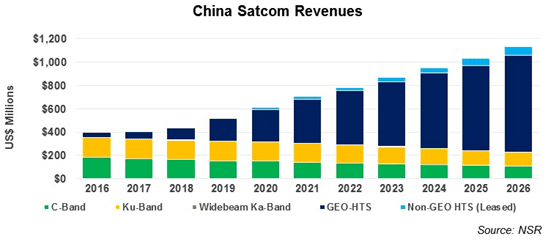

NSR’s industry-first China Satcom Markets (CSM) report finds a Chinese satellite industry primed to take a larger share of the global satcom market through attractive one-stop-shop offerings, aggressive growth plans and enhanced exports. For GEO-HTS satellites alone, NSR forecasts Chinese state-owned companies to manufacture and launch over 800 Gbps of capacity by 2026, with much of this coming over Southeast Asia, East Asia and South Asia.
Since the end of the cold war, the satellite and space industry has been a duopoly between the United States and EU, with other players such as Russia, Japan and now India playing a secondary role. At some point soon, however, it appears likely China will assume a position as a top-tier space nation globally, with significant ramifications for the satellite telecoms industry.
“China’s most-recent five-year plan (2016-2020) notes a goal to improve launch and manufacturing capabilities, specifically for new satellite platforms. This translates into more satellites being exported by China to developing countries, with at least three ordered in 2018 thus far,” noted Jose Del Rosario, NSR research director.
For additional information on this report, visit www.nsr.com.